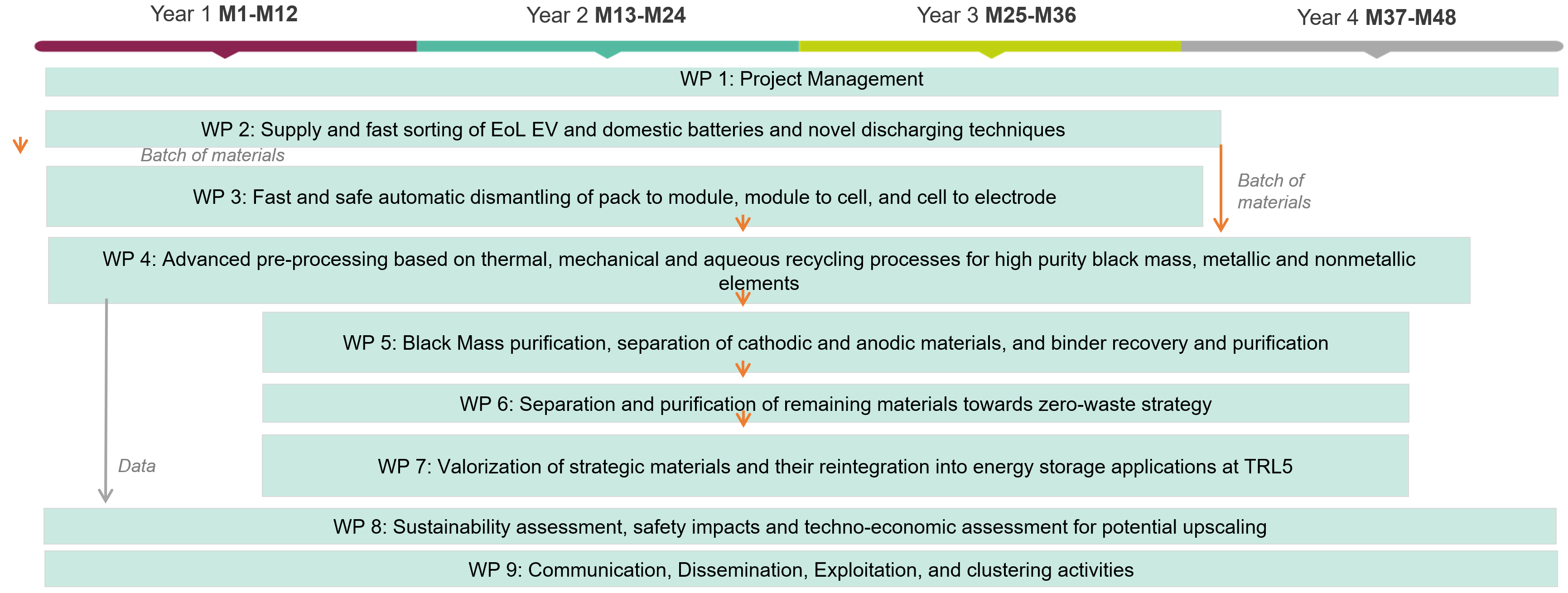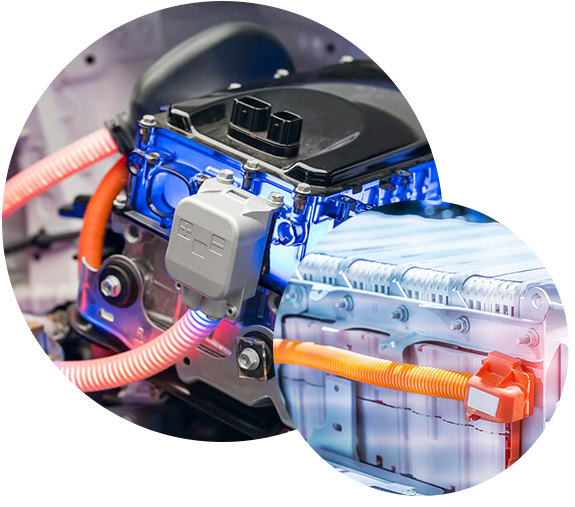Bridging conventional and innovative recycling processes for batteries

Stage 1
Research, development and optimisation of different technologies
Stage 2
Benchmarking and selection of the optimum processing parameters and flowsheet for validation of recycled materials
Stage 3
Validation of the RESTORE concept and reintegration of strategic materials into energy storage applications at TRL 5
Objectives breakdown
Objective 1
Develop and prototype at TRL a fast, contactless solution to sort batteries by type and chemistry.
Objective 2
Develop a novel effective discharging technique for small domestic batteries.
Objective 3
Develop a smart, fast and safe automatic solution to dismantle battery pack into components.
Objective 4
Develop a fast and safe method to dismantle modules to cells and cells to electrodes, using innovative unwinding, delamination, and electrohydraulic fragmentation for high-purity material separation.
Objective 5
Develop advanced pre-processing techniques for high-purity black mass (BM) production from industrial lines using thermal and dry mechanical treatments, and separate high-purity cathodic and anodic materials with advanced beneficiation process.
Objective 6
Implement direct formulation of tailored electrodes for new batteries > Direct recycling of cathodic and anodic materials.
Objective 7
Achieve zero-waste and cradle-to-cradle recycling for all non-active battery materials, including electrolytes, binders, polymers, and other non-active metals.
Objective 8
Develop a safe, economically and environmentally sustainable process. In RESTORE, the techno-economic assessment of the individual processes will determine the most promising processing route from scalability and economic perspectives. This assessment will be complemented by a Safe and Sustainability by Design (SSbD) including Life cycle assessment (LCA).
Objective 9
Validate the RESTORE concept and performance of recycled materials on coin cells.

The RESTORE initiative aims to demonstrate that the 2031 battery regulation targets for recyclability are achievable:
- > 95 % for Co, Ni, and Cu
- > 80 % for Li
- > 70 % by average weight of Li-based batteries.
Furthermore, RESTORE will ensure that the cost of recycled and produced materials falls below the 2030 battery manufacturing KPIs set by the European partnership’s SRIA, with manufacturing costs under €80/kWh at the cell level and energy consumption below 25kWh/kWh.









